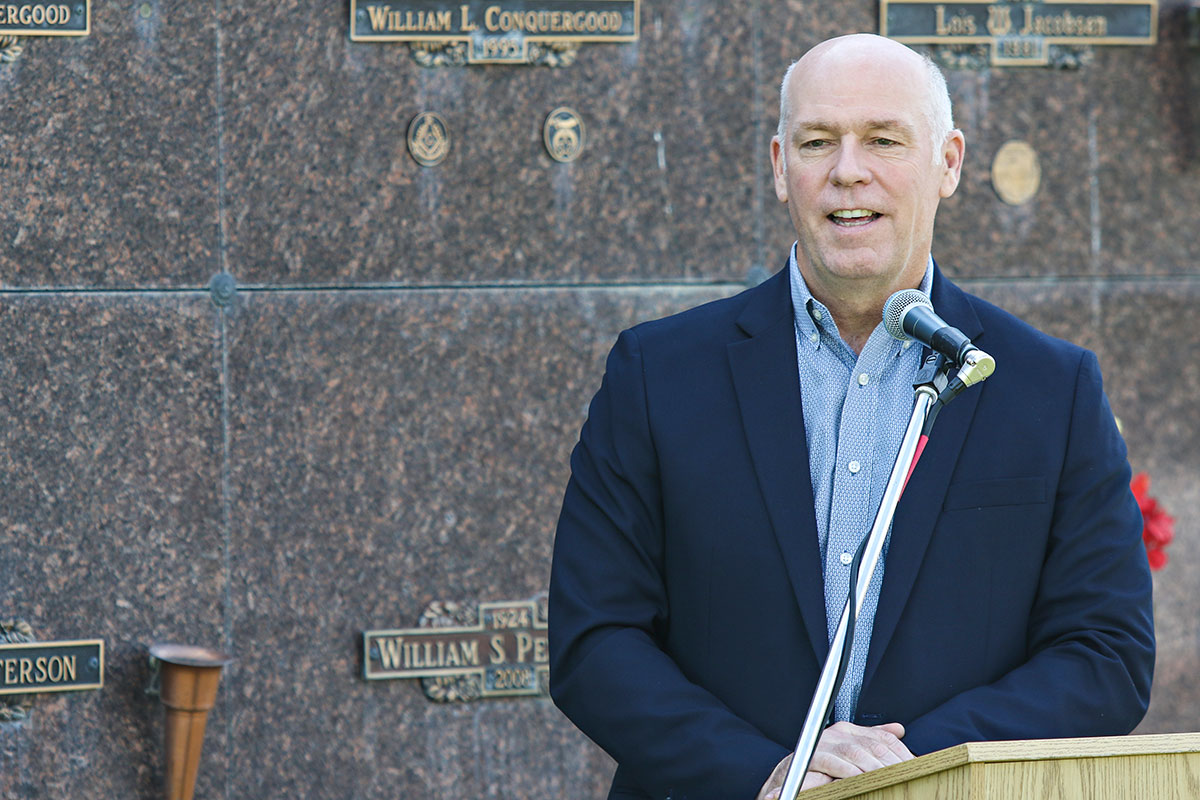HELENA – Gov. Greg Gianforte on Wednesday announced he is lifting Montana’s state of emergency for the coronavirus pandemic, more than 15 months after it was imposed under his predecessor.
The Republican governor announced the move during a tour of a restaurant in Billings as COVID-19 case rates continue to slowly decline.
“We’re getting back to normal,” Gianforte said. “The reductions in infections, the reductions in hospitalizations says we’re on the other side of this.”
Gianforte said he wanted to send a message that Montana is open for business, although the announcement has little practical effect for its residents. Broad public health mandates such as face mask requirements and occupancy limits for businesses had been previously rescinded. Almost half the state’s eligible residents are now fully vaccinated.
Other states also have lifted emergency declarations in recent days as the public health crisis eases. Oregon and Washington on Wednesday became two of the last states to ease virus orders in place since the pandemic’s start.
Yet a virus variant threatens to set back recent progress. In California, health officials in Los Angeles County this week strongly recommended that people wear masks indoors in public places — regardless of their vaccination status — to prevent the spread of the highly transmissible delta variant.
“Of course if there was new data, we would take different action,” Gianforte said of variants. “But I’m pleased to report to Montanans that as of today we’ve rescinded the emergency order and we’re back to normal.”
In Montana, about 50 new cases per day of the virus were confirmed by health officials on average over the past week. That compares with a daily average of more than 1,200 cases when infection rates peaked in mid-November.
Hospitalizations are down from 427 people daily on average in November, to 54 daily on average in June. Of patients hospitalized with COVID-19 since late April, 95% were unvaccinated, said Jon Ebelt with the Montana Department of Public Health and Human Services.
The respiratory disease has caused at least 1,665 deaths in Montana. More than 113,000 cases of COVID-19 have been confirmed since the first infection was announced in early March 2020.
The actual number of deaths and infections is likely higher because not all infections are recorded. Most people recover after experiencing only mild or moderate symptoms.
All people ages 12 and older are eligible for vaccines, but the percentage of people getting shots varies widely across age groups. About three-quarters of people aged 70 and older have been vaccinated, but less than one-quarter of people aged 12 to 17 were by June 18, according to state data.
The state is going to continue to encourage people to get vaccinated, Gianforte said, and a spokesperson said the state will also continue to test for the virus and trace the contacts of those who are infected. Gianforte didn’t offer any specifics when asked how the administration will address lagging vaccination rates in younger residents.
In the state’s most populous county, Yellowstone, health officials say the cancellation of the state of emergency won’t change what they are doing, including trying to get more young people vaccinated.
“We’re really focused on getting students vaccinated before school starts again” in August, Riverstone Health spokesperson Pat Zellar said. “Fully vaccinated people don’t have to quarantine and won’t be missing school.”
